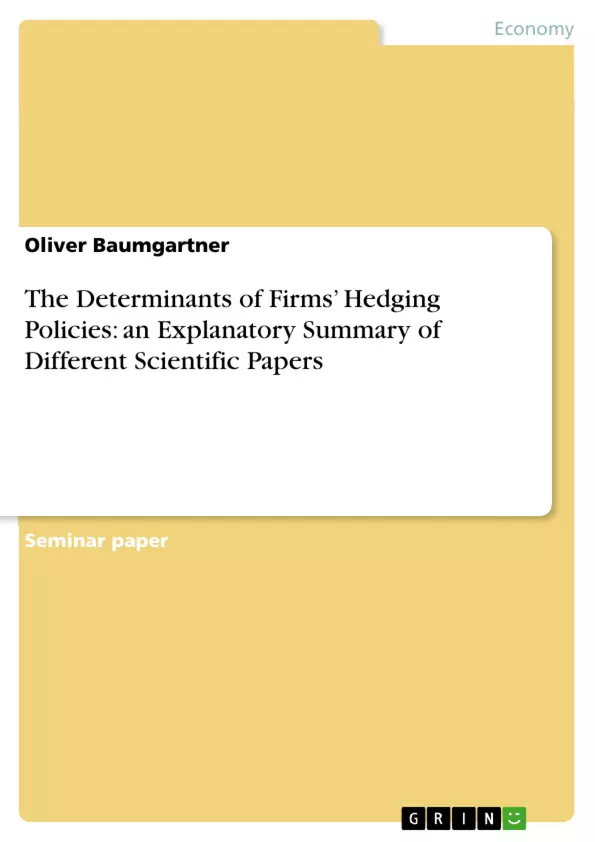This seminar paper deals with three main hedging policies. It is based on the Smith and Stulz (1985) paper "the determinants of firms' hedging policies. Furthermore their results are compared with other scientific papers. At the end, one should be able to get a basic knowledge about hedging and how taxes, debt and managerial behavior can influence different policies.
Inhaltsverzeichnis (Table of Contents)
- I. Introduction
- II. Taxes
- III. Debt
- IV. Managerial Compensation and Risk Aversion
- V. Conclusion
- VI. References
Zielsetzung und Themenschwerpunkte (Objectives and Key Themes)
This term paper examines the benefits of hedging for firms, focusing on three key areas: taxes, debt, and managerial behavior. The paper draws upon the seminal work of Smith and Stulz (1985), exploring how hedging can influence a firm's after-tax value in these areas. The analysis highlights the impact of hedging on tax shields, debt financing, and managerial compensation structures, providing insights into the complexities of hedging strategies.
- The impact of hedging on a firm's after-tax value
- The relationship between hedging and tax shields
- The influence of hedging on debt financing and firm value
- The role of managerial compensation and risk aversion in hedging decisions
- Comparison of the Smith and Stulz (1985) model with other research findings
Zusammenfassung der Kapitel (Chapter Summaries)
- I. Introduction: This chapter introduces the concept of hedging and its role in stabilizing firms. It highlights the key areas of analysis: taxes, debt, and managerial behavior, and introduces the work of Smith and Stulz (1985) as the foundation for this study.
- II. Taxes: This chapter discusses the influence of hedging on a firm's tax liabilities. It explains Smith and Stulz's model, which demonstrates how hedging can lead to a higher after-tax value by reducing tax burdens. The chapter also addresses the limitations of the model, particularly its assumption of costless hedging, and discusses the findings of Graham and Rodgers (2002) concerning the prevalence of convex tax structures.
Schlüsselwörter (Keywords)
This paper explores the determinants of firms' hedging policies, focusing on the relationship between hedging, taxes, debt, and managerial compensation. Key concepts include after-tax value, tax shields, costless hedging, convex tax structures, and managerial risk aversion.
- Quote paper
- BSc Oliver Baumgartner (Author), 2012, The Determinants of Firms’ Hedging Policies: an Explanatory Summary of Different Scientific Papers, Munich, GRIN Verlag, https://www.grin.com/document/211890



